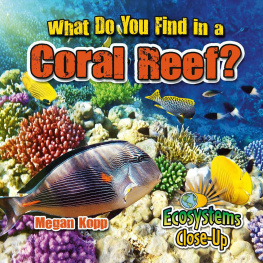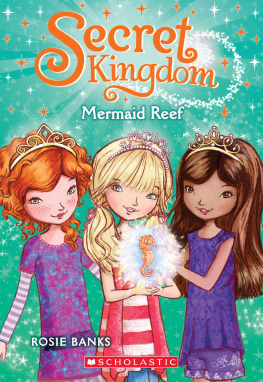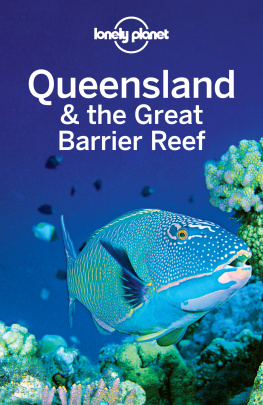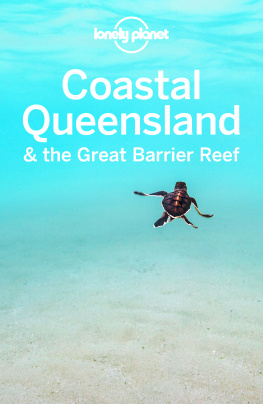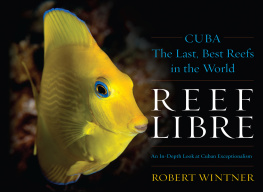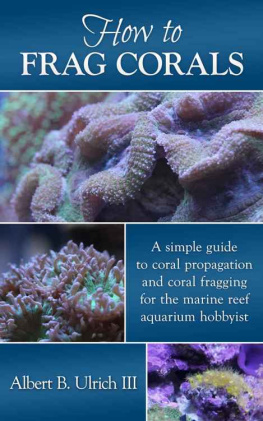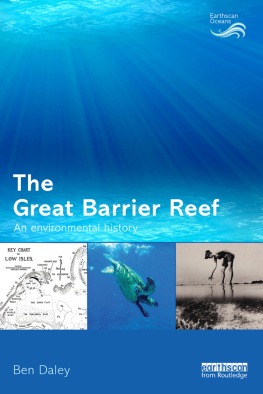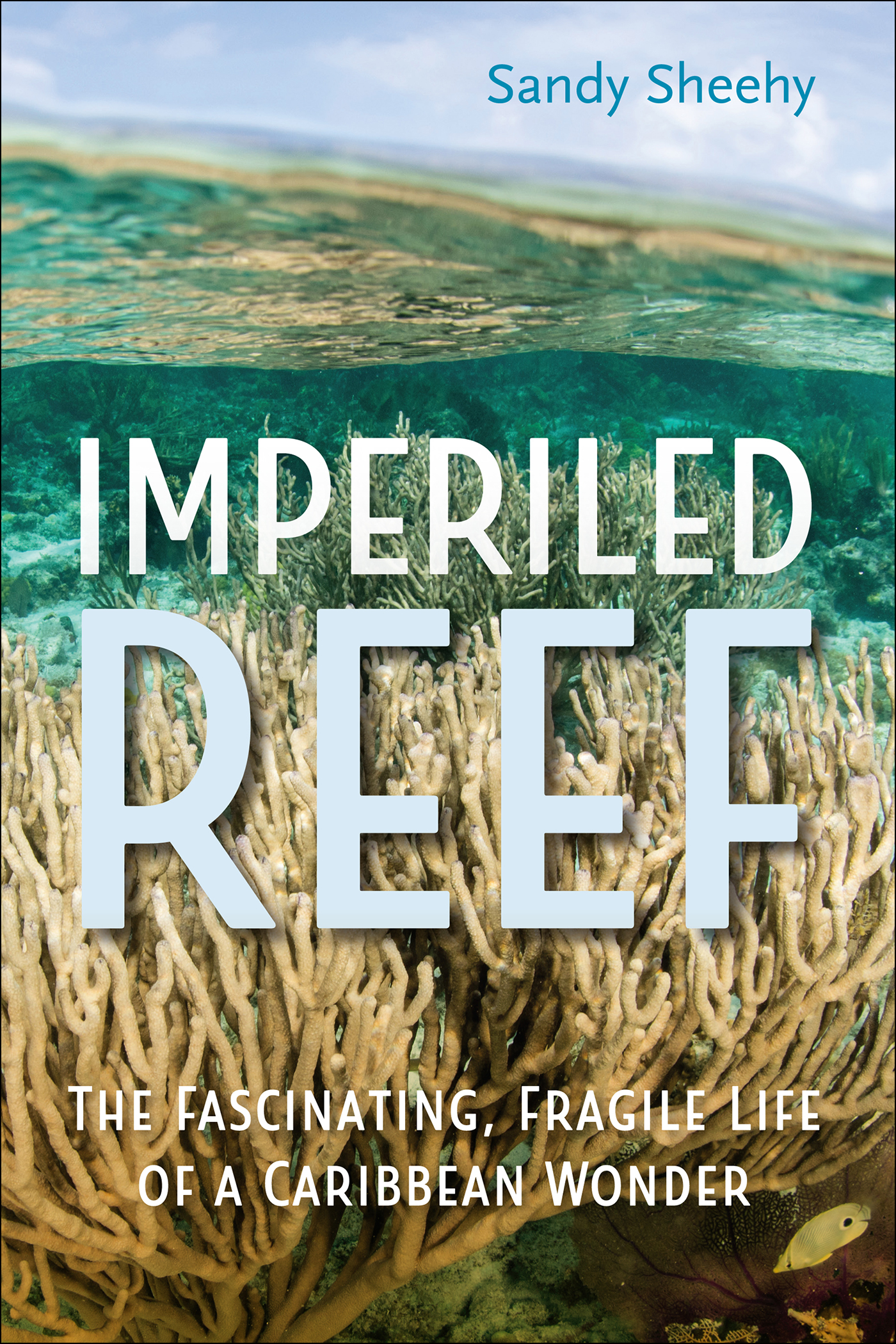Contents
Landmarks
Pages
I MPERILED R EEF

Mesoamerican Barrier Reef Ecoregion, courtesy of the Healthy Reefs Initiative.
The map shows Honduras in the south, Guatemala in the southwest, a part of Caribbean Sea in the east, and Cancn a Mexican city on the Yucatn Peninsula bordering the Caribbean Sea in the north. The Mesoamerican reef is marked along the coast of Honduras, Guatemala, Belize and Mexico. The Mesoamerican reef ecoregion, extending from the Bay Islands of Honduras north through Guatemala and Belize to the tip of Mexicos Yucatn peninsula, is part of an interconnected system of coastal habitats and currents that stretch throughout the Caribbean basin and beyond.
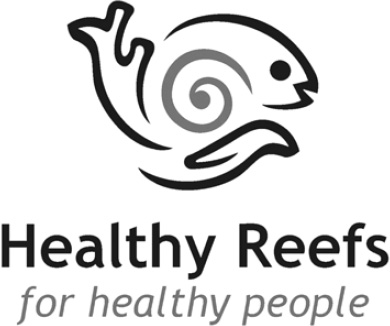
I MPERILED R EEF
The Fascinating, Fragile Life of a Caribbean Wonder
SANDY SHEEHY
UNIVERSITY OF FLORIDA PRESS
Gainesville
Copyright 2021 by Sandy Sheehy
All rights reserved
Published in the United States of America
262524232221654321
ISBN 978-1-68340-249-7
Library of Congress Control Number: 2021930613
University of Florida Press
2046 NE Waldo Road
Suite 2100
Gainesville, FL 32609
http://upress.ufl.edu

In memory of my father, Robert Granville,
who nurtured my curiosity
about the natural world
PREFACE
I first became interested in the undersea world when I was four or five years old. I remember sitting in the waiting room of my pediatric dentists office, fascinated by the colorful little fish in the tropical aquarium complete with miniature orange castle. When I was a bit older, my favorite television show was Sea Hunt, the 1950s series of thrillers in which Lloyd Bridges, best known nowadays as the father of actors Beau and Jeff, played former U.S. Navy frogman Mike Nelson, who fought bad guys beneath the waves. A decade later, I became a fan of the TV documentary series The Undersea World of Jacques Cousteau, which pioneered a new level of sophistication in underwater cinematography. As an adult, I noticed that many of the fantastic creatures on the planet Pandora in James Camerons 2009 film Avatar were inspired by reef species here on Earth.
My father taught me how to swim when I was three, so proceeding to snorkeling was a natural for me; even a lost hairband on the bottom of a swimming pool was reason enough to look beneath the surface. After a couple of trips to Florida and the Caribbean, I got my NAUI scuba certification, so that I could swim among the creatures on the coral, rather than merely watching them from above.
Let me explain right up front that I am not an underwater photographer. All photos that appear in this book are black and white, contributed by the individuals credited in the captions. Libraries, online outlets, dive shops and the remaining bricks-and-mortar bookstores carry stunning books of full-color underwater photographs, from coffee-table tomes to pocket guides with their pages thoughtfully waterproofed so that they can be carried aboard a dive boat without becoming soggy. Some, such as Underwater Editions Cozumel: Dive Guide and Log Book, spiral bound for handy reference on board, focus on one particular part of the reef. Reef Creature in-a-Pocket: Florida, Caribbean, Bahamas by Paul Humann and Ned DeLoach is both wider-ranging and waterproof. A classic of the large format genre is Coral Gardens, the lushly photographed 1978 volume by German actress and director Leni Riefenstahl, better known for the Nazi propaganda film Triumph of the Will and for her documentary of the 1936 Summer Olympics. A more recent book, Citizens of the Sea: Wondrous Creatures from the Census of Marine Life, published in 2010 by the National Geographic Society, is rich in remarkable photos, as well as surprising details, of life beneath the worlds waves. Its author, Nancy Knowlton, founded the Center for Marine Biodiversity and Conservation at the University of California San Diegos Scripps Institution of Oceanography and is Sant Chair Emerita of Marine Science for the Smithsonian Institutions Museum of Natural History.
I own a number of handsome, informative underwater photo books and nature guides that I list in the bibliography. I am particularly fond of Hofstra University biologist Eugene Kaplans Coral Reefs: A Guide to the Common Invertebrates and Fishes of Bermuda, the Bahamas, Southern Florida, the West Indies, and the Coast of Central and South America, part of the Roger Tory Peterson series of field guides sponsored by the National Audubon Society and the National Wildlife Federation. My copy happens to be leather-bound, complete with gilt-edged pages and a pretty orange ribbon attached as a bookmark, so it doesnt accompany me on dive boats, but the arrangement of the material is sensible, the text is thorough and accessible, and the photos (supplemented by Susan Kaplans illustrations) have proved more useful for making sense of what I see in the briny deep than those in sturdier but briefer guides.
As a journalist, rather than a marine biologist or oceanographer, I am deeply indebted to the knowledge that specialists in these and related fields have shared so generously in books, in theses, in journal articles and conference proceedings, and through interviews and correspondence. I am particularly grateful to Zach Foltz, station manager and dive officer for the Smithsonian Institutions Caribbean Coral Reef Ecosystems Program, who arranged for me to spend a week at the Smithsonians Carrie Bow Cay Field Station on the Belize section of the Mesoamerican Barrier Reef. There I was privileged to observe Department of the Interior biological oceanographer Karen Koltes and her colleagues as they monitored the health of the coral colonies and of the seagrass beds that lie between the reef and the mainland, nourishing and protecting hundreds of species of juvenile fishes and crustaceans. Witnessing the meticulous day-to-day tasks of marine field work gave me immense admiration for those who conduct it.
I am also especially thankful to environmental engineers Ian Drysdale, Honduras in-country coordinator for the Healthy Reefs Initiative, and Jennifer Myton, associate program director for the Coral Reef Alliance (CORAL), who shared their perspectives on the effective community-based projects to improve and protect the health of the Mesoamerican Barrier Reef.
In reviewing the manuscript in draft, marine biologist, invertebrate zoologist and conservation ecologist Richard Brusca, coral reef ecologist Stephen Gittings and marine biologist Donald Behringer provided valuable suggestions and caught what would have been embarrassing mistakes.
As this book goes to press, the COVID-19 pandemic continues to impact the countries along the Mesoamerican Barrier Reef, both by infecting residents and by discouraging tourism. The effects described in this book reflect early 2021 figures.
Any errors or omissions in the following chapters are solely my own.



